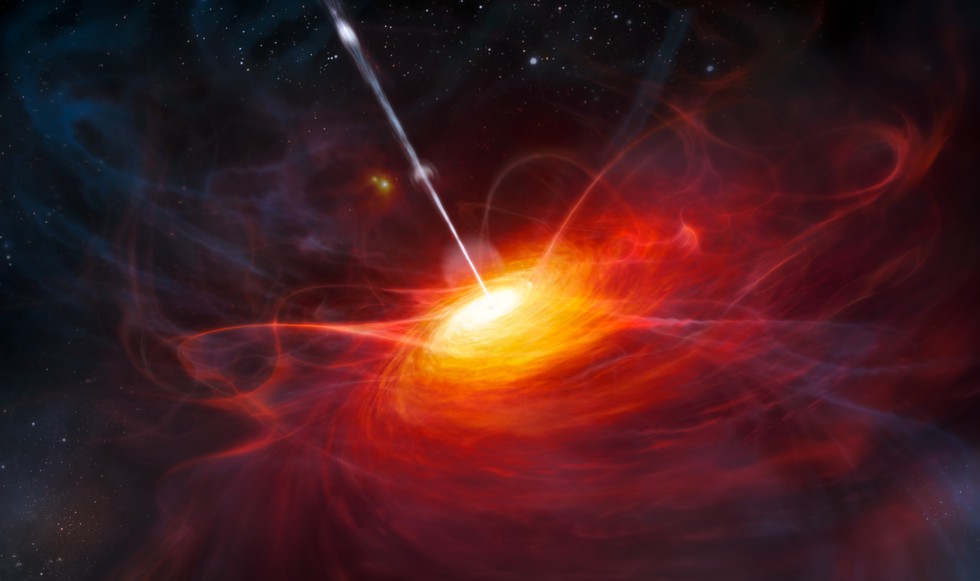About Quasar:
- A quasar is an extremely active and luminous type of Active Galactic Nucleus (AGN).
- An AGN isnothing more than a supermassive black hole that is active and feeding at the center of a galaxy.
- All quasars are AGNs, but not all AGNs are quasars.
- Quasar is short for quasi-stellar radio source because astronomers first discovered quasars in 1963 as objects that looked like stars but emitted radio waves.
- Quasars are intense sources of X-raysas well as visible light. They are the most powerful type of X-ray source yet discovered.
- They are among the most luminous, powerful, and vibrant objects known in the universe.
- How are they formed?
- Quasars are thought to form in regions of the universe where the large-scale density of matter is much higher than average.
- An active galaxy is one in which the central supermassive black hole is consuming large amounts of matter.
- The infall of matter into the black hole is so great that all the material can't enter the black hole at the same time, so it forms a queue as a spiralling accretion disk.
- The matter—in the form of huge clouds—falls into the disk, with the inner parts of the cloud closer to the black hole orbiting faster than the outer parts (just like planets closer to the sun orbit faster than those farther away).
- This creates a shear force that twists the clouds, causing them to bump into their neighbours as they move around the black hole at velocities ranging from 10% of the speed of light up to over 80%.
- This friction from fast-moving gas clouds generates heat, and the disk becomes so hot—millions of degrees—that it shines brightly.
- Some of the material in the disk is also funnelled away from the black hole in a highly luminous, magnetically collimated jet.
- The hot accretion disk and the jet combine to make the nucleus of the active galaxy shine so brightly that it can be seen far across the universe.
The brightest quasars can outshine all of the stars in the galaxies in which they reside, which makes them visible even at distances of billions of light-years away.
